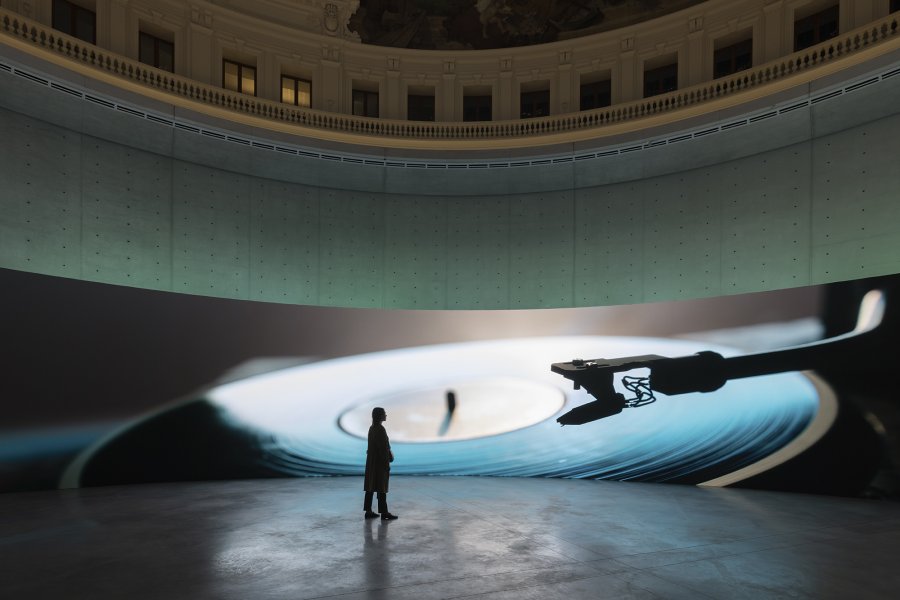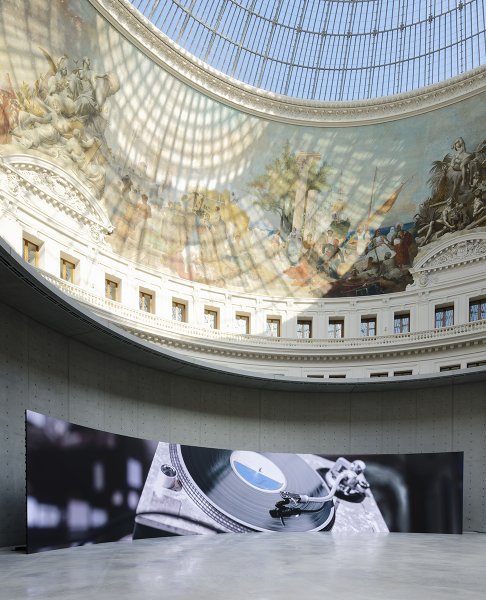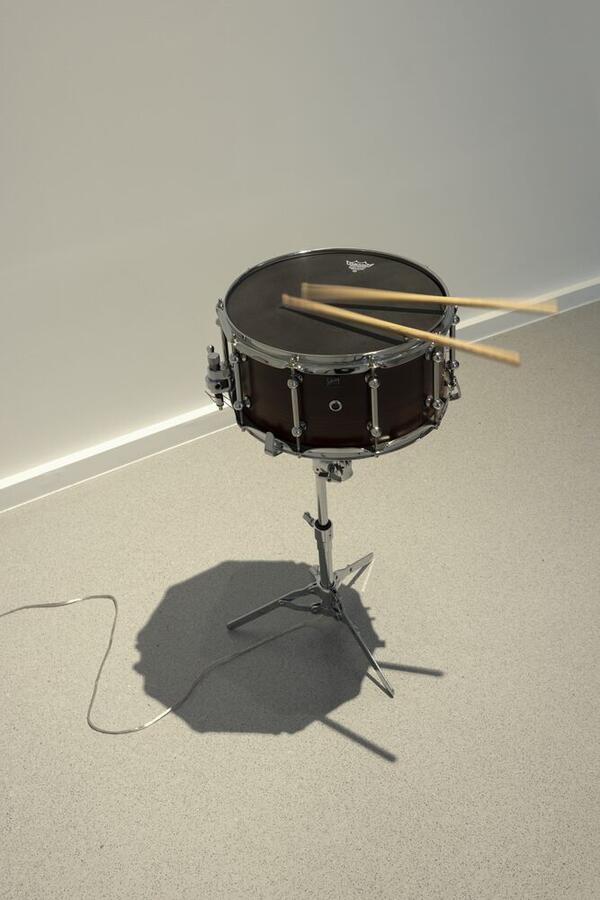Time No Longer
3-channel HD computer-generated imagery and 3-channel sound, color.
13 minutes
Time No Longer (2021) is a video with no action or character. It shows a turntable, playing a piece of haunting music. It is Quartet for the End of Time, composed in 1941 by Olivier Messiaen (1908–1992), of which Anri Sala has retained only the clarinet solo (arranged by André Vida and Olivier Goinard), entitled “Abîme des Oiseaux”. Catapulted into space, in the weightlessness of a space station reproduced in computer-generated images, the turntable turns on itself at the whim
of invisible cosmic forces. Its arm rises to fall randomly on the record, playing fragments of the composition in a series of chopped, truncated, unfinished musical phrases.
The piece chosen is a clarinet solo that evokes the angels of the Apocalypse, announcing the end of time. Messiaen composed this piece for Henri Akoka, a great French clarinettist and Algerian Jew, with whom he was detained by the Nazis in Stalag VIII-A. Akoka played this solo for the first and last time on 15 January 1941, in front of prison guards and a few prisoners. In the video, the sound of the clarinet alternates with the melancholy song of a saxophone. The work is also an elegy to Ronald McNair, an African American astronaut and saxophonist who was the first musician to plan to record in space. He succumbed to the explosion of the American space shuttle Challenger, which was destroyed during its launch in 1986, 73 seconds after take-off.
Two ghosts enter into dialogue here. McNair’s spectral music harmonises with Akoka’s clarinet in a spaceship cabin without occupants. This fleeting encounter, between a music that has existed beyond horror and another that takes on the edge of another world, brings several types of solitude into coexistence: that of the prison, that of the cosmic void, that of death. It allows a strange utopia to emerge. This setting, devoid of all human presence, of all life, suggests a post-apocalyptic future where man is no more, where only the ghost of his memory resounds, through the melody of a music without an audience. The film begins and ends with the ethereal light of the sun shining on the planet’s surface. Is it a planetary twilight or the dawn of a new day?
For Messiaen, this piece of music dedicated to birds was a way of fighting despair, specifically against the ravages of time. In his words, “The abyss is Time, with its sorrows and its weariness. The birds are the opposite of Time; they are our desire for light, for stars, for rainbows and joyful songs.”

© Anri Sala / Adagp, Paris, 2022 Courtesy de l'artiste et Marian Goodman Gallery / Courtesy the artist and Marian Goodman Gallery
© Tadao Ando Architect & Associates, Niney et Marca Architectes, agence Pierre-Antoine Gatier. Photo : Andrea Rossetti Courtesy Pinault Collection
Vue d'exposition/ Exhibition view, "Anri Sala", Bourse de Commerce - Pinault Collection, Paris, 2022

© Anri Sala / Adagp, Paris, 2022. Courtesy de l'artiste et Marian Goodman Gallery

© Anri Sala / Adagp, Paris, 2022. Courtesy de l'artiste et Marian Goodman Gallery

© Anri Sala / Adagp, Paris, 2022. Courtesy de l'artiste et Marian Goodman Gallery / Courtesy the artist and Marian Goodman Gallery
© Tadao Ando Architect & Associates, Niney et Marca Architectes, agence Pierre-Antoine Gatier. Photo : Andrea Rossetti Courtesy Pinault Collectio
Vue d'exposition/ Exhibition view, "Anri Sala", Bourse de Commerce - Pinault Collection, Paris, 2022



